Mar 26 2018
Sunday – breaking ice with the ladies
The Veterans Ladies were missing a fourth person, so they offered me a stroke seat in a quad outing on Sunday afternoon. I was in for a nice, short row, so I gladly accepted.
Romana and I arrived early because there was some work to do. First, we put our single and double back on slings. Some experiments on Saturday had revealed that the new tight racks are a bit too tight. The guy who built them used two of the smallest boats as measures and some boats simply don’t fit. Everything has to be disassembled and rebuilt from scratch.
Then, I wanted to make sure the quad was in good order. There are a few crews in our club with a habit of cannibalizing club equipment, so in the popular boats you can never be sure you are using the original foot stretchers, sliding seats, and more.
The situation was not good. A lot of red C rings were missing under the oarlocks, and the club’s spare part are in Italy with the Juniors and Men on their rowing camp. So I had to take from my own spare parts collection. Also, the stroke seat foot stretcher was not the original one, but I had no way to fix that, and finally some parts of the rudder were missing. The boat was rowable, but it would take a bit more effort for me as a steering stroke to make sure we were going straight.
Finally, we launched, and in the mean time the wind had strengthened. It was a few degrees above the freezing point and the waves were pretty strong. After building up from arms only to a full length stroke, I settled on 16 SPM and we tried to steady the balance on waves, in a blazing tailwind, at this low stroke rate.
I love these kind of challenges, and I think it really helped us rowing technically well, when we went in to the narrow twisty bit of the gorge at the north end of our lake. The idea was to find quiet water, and we did.
It was nice to find out I could still toe steer a quad blindly through the narrow twisty bit. With a slow turning boat you have to make sure you are a little “higher” going into a turn, and I managed pretty well, relying on our bow seat to be on the lookout for any traffic or obstacles.
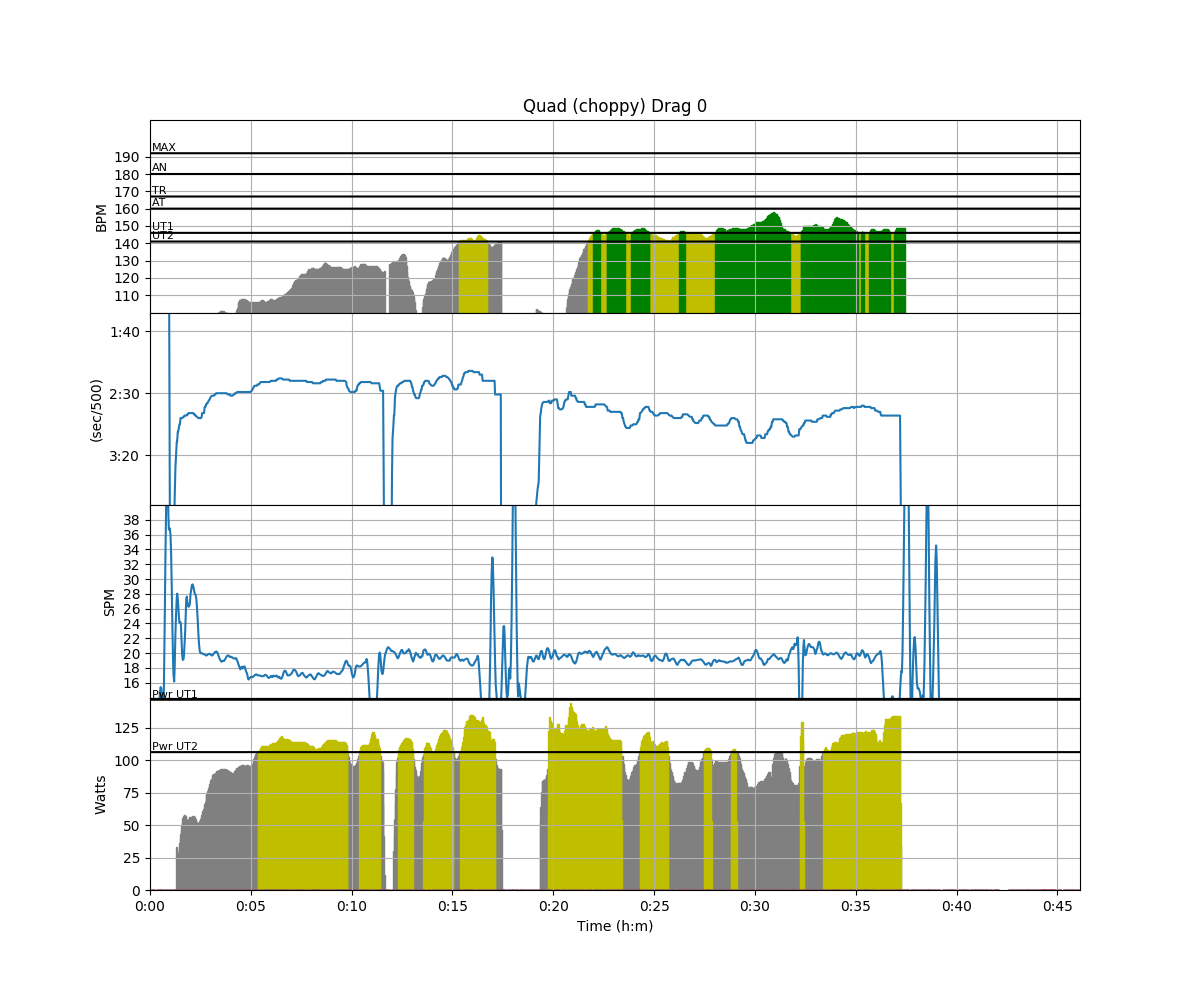
Out of the twisty part, we were all glad and looking forward for the straight kilometer, and I guess our bow seat reduced the frequency of looking. In fact, it was me who spotted the ice first, and very late. We made an emergency stop, breaking ice with our blades and boat, turning the river into a huge black field looking like a gigantic glass of Coke with ice cubes.
We backed out of our Coke with ice, then turned the boat, and headed back for the lake.
The wind had gotten stronger, a head wind now, and we were slow in making progress. When we were half way the lake, our 2 seat asked that we Row back to the club. I didn’t blame her, because through the waves, she and bow seat were wet from head to toe from splashes of icy water.
We returned safe and put the boat in slings for s thorough inspection. Luckily, no scratches or anything from our ice breaking adventure. We did mention the ice in our incident report but the bit about missing boat parts was longer.
I am typing this from a British Airways flight from Vienna to Heathrow, where I will board a plane to Phoenix, Arizona.
How-to
With no holder for a SpeedCoach and classical riggers on this quad, I decided to use the BoatCoach Android app on my waterproof Samsung phone. This works perfectly with the RAM mount and BoatCoach has a splash guard mode preventing splashes to accidentally activate the touch screen.
[amazon_link asins=’B074KG6G5Q’ template=’ProductCarousel’ store=’rowingdata-20′ marketplace=’US’ link_id=’d047ac6e-3176-11e8-aa61-ad75becb394b’]
After working through a few data related bugs with the BoatCoach developer last fall, this app is pretty good for recording and showing stroke rate. I still think the user interface is overly complex, though. Using the app for the first time after a few months, I wasn’t sure if I was recording the outing at all, or if the app only recorded the data after starting a “piece”. As I hate having my crew waiting for me fiddling with menus and settings, I just kept the settings as is and hoped for the best. As a backup, I also recorded position and heart rate with the Garmin Forerunner watch. This connects to my Wahoo Tickr X heart rate belt through the ANT+ protocol. I was glad I did, because it turns out the BoatCoach app hadn’t connected with the BLE channel of the heart rate belt. So I ended up uploading two separate data sets to Rowsandall.com and then using Data Fusion to merge them.
[amazon_link asins=’B0160BC1FO,B013GMWTCU’ template=’ProductCarousel’ store=’rowingdata-20′ marketplace=’US’ link_id=’0180615a-3177-11e8-87c1-5360e71c77fd’]
The power data were calculated using Rowsandall.com’s Physics Module. For this to work well, you need to input wind (strong today) and current (not applicable to this row), set the boat type correctly and estimate the average crew weight. If you get all this right, the Physics Module does a pretty good job at estimating power from boat speed and stroke rate. It is accurate enough to get a good value for the average and normalized Power, which is currently the most important metric for me on an outing like this. I just use it to get a value for the training load. As we rowed only 40 minutes and most of it was well below 20spm, the training load wasn’t very heavy.
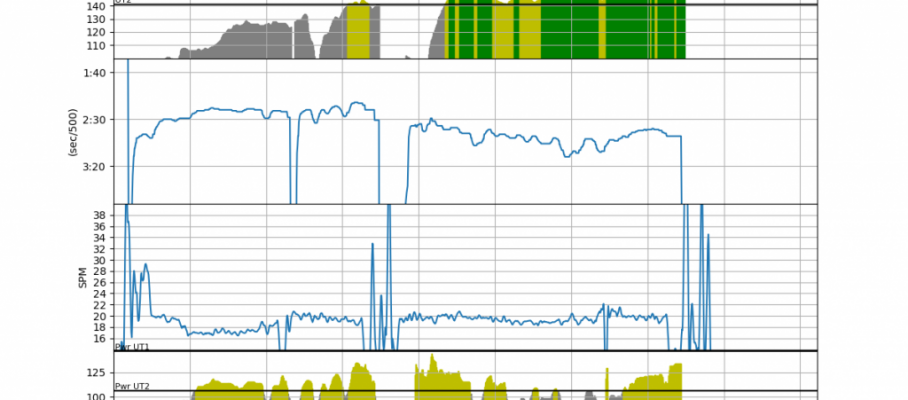
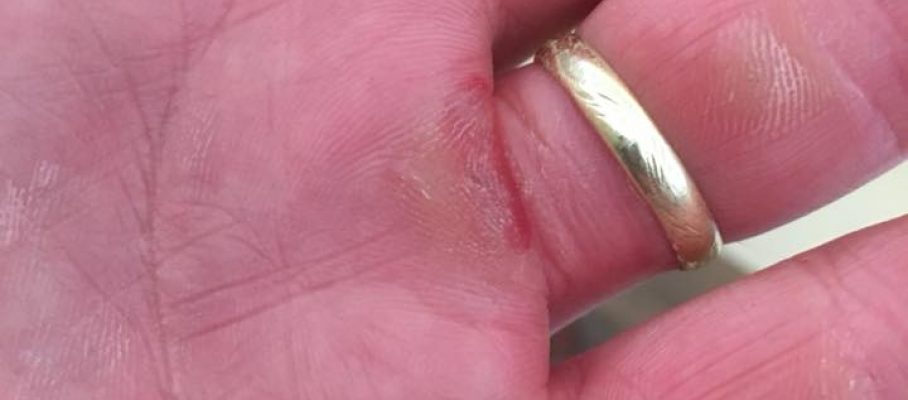
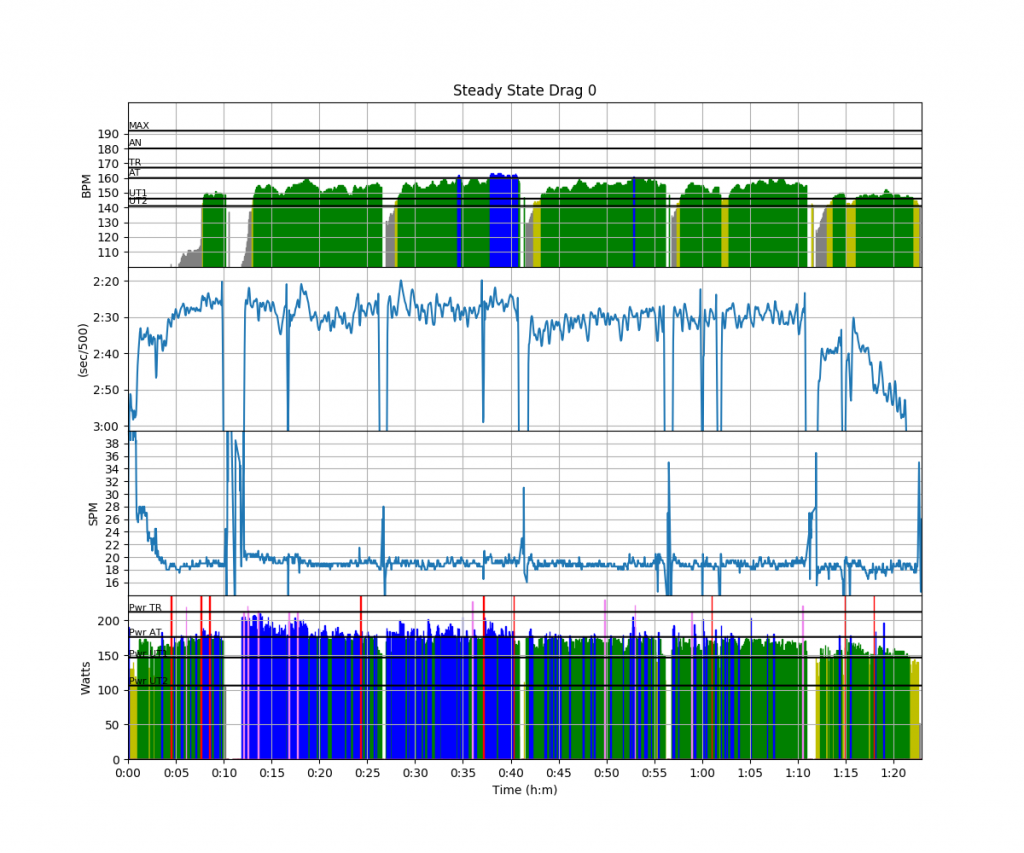
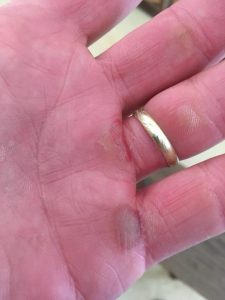
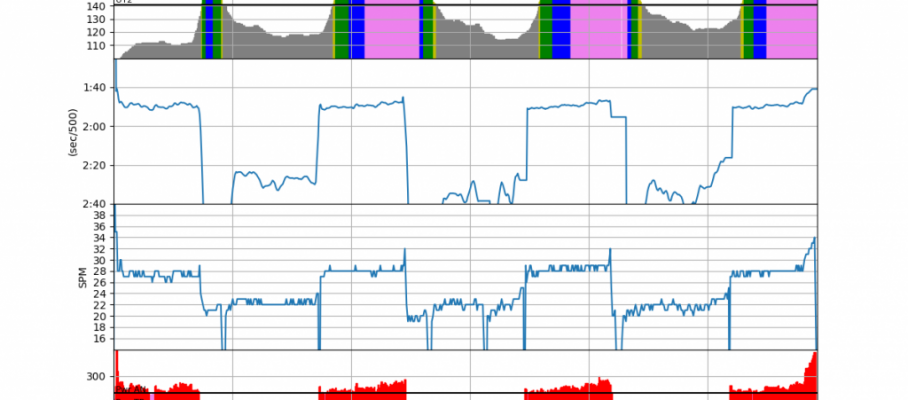
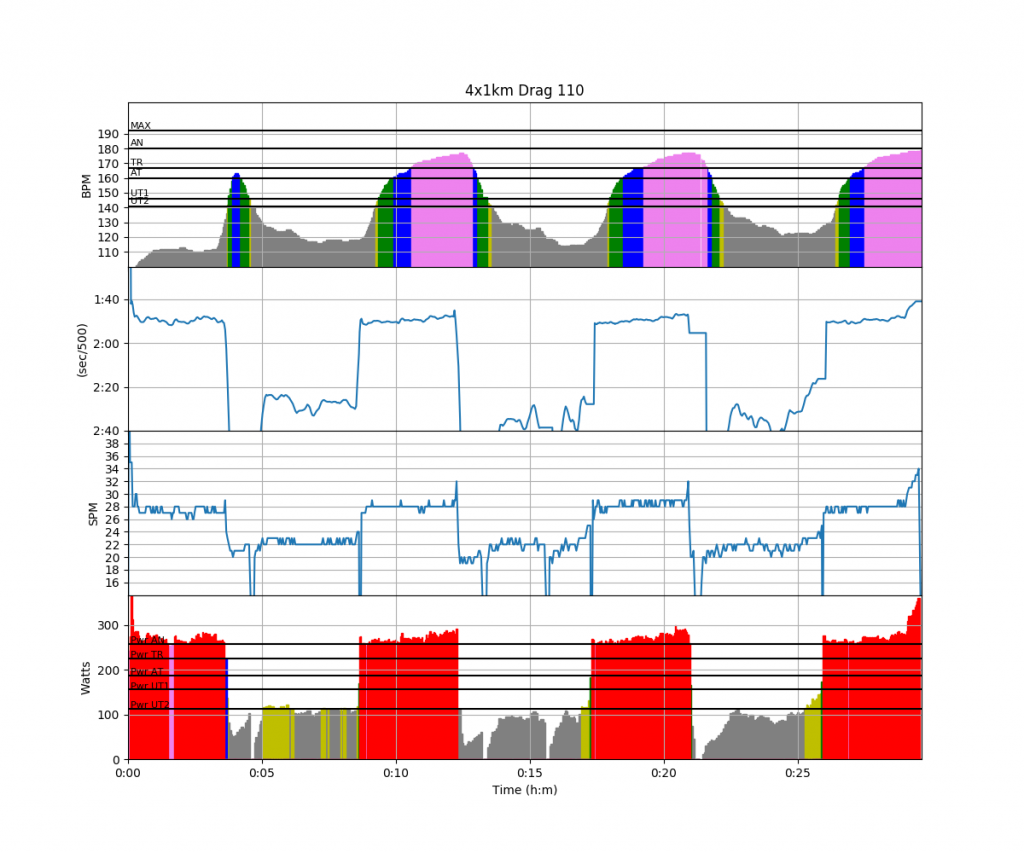
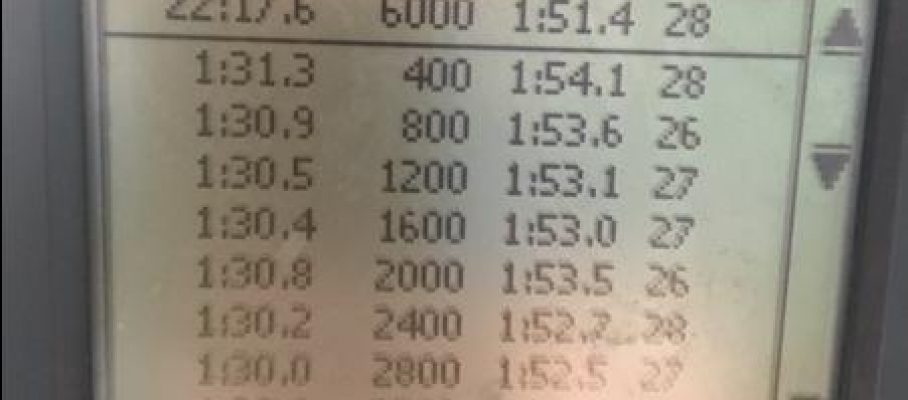
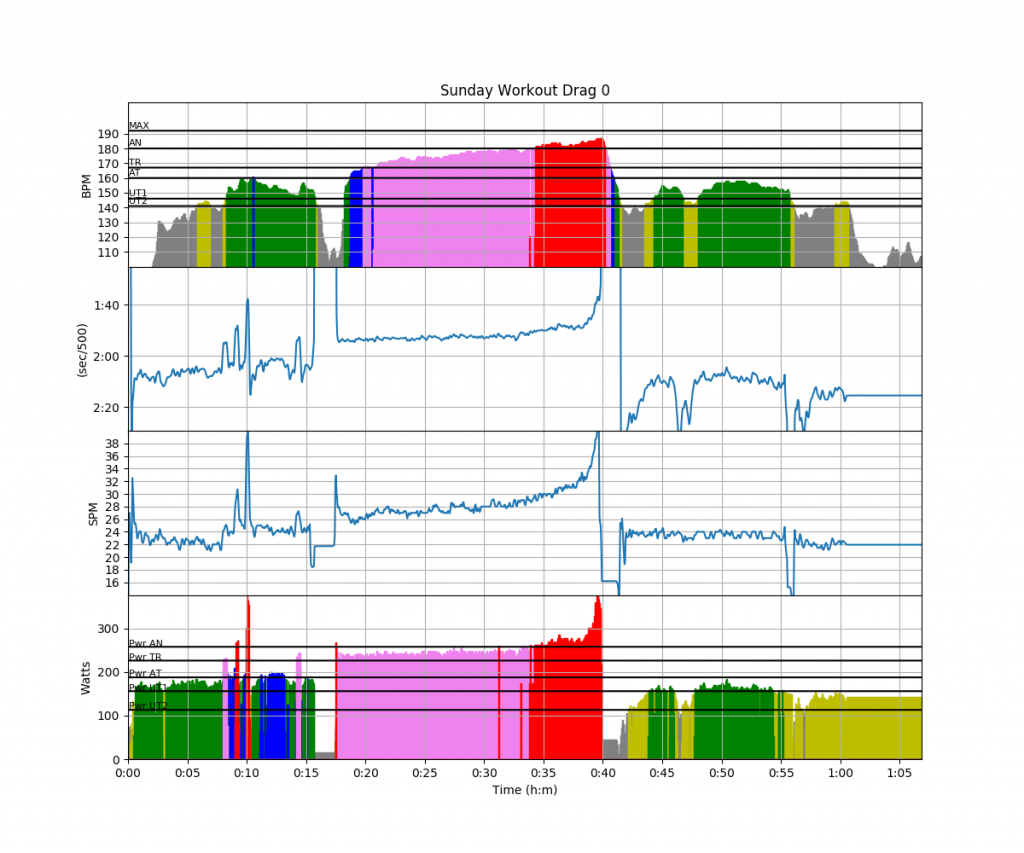



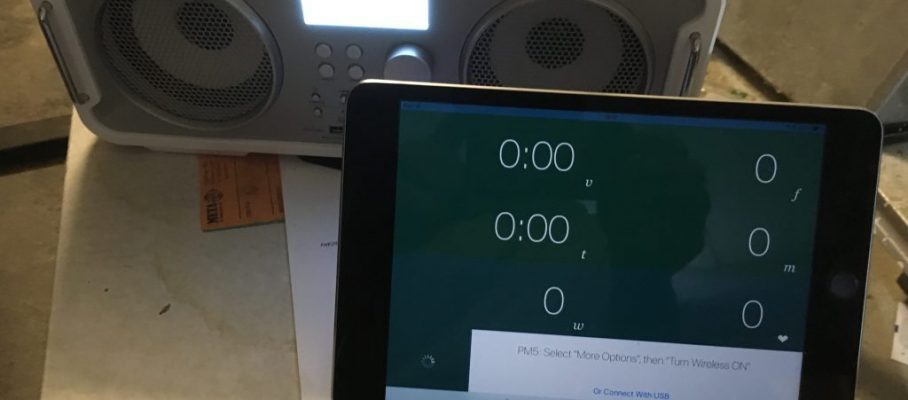
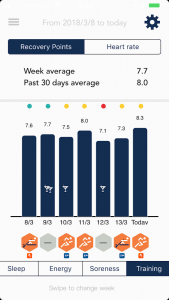
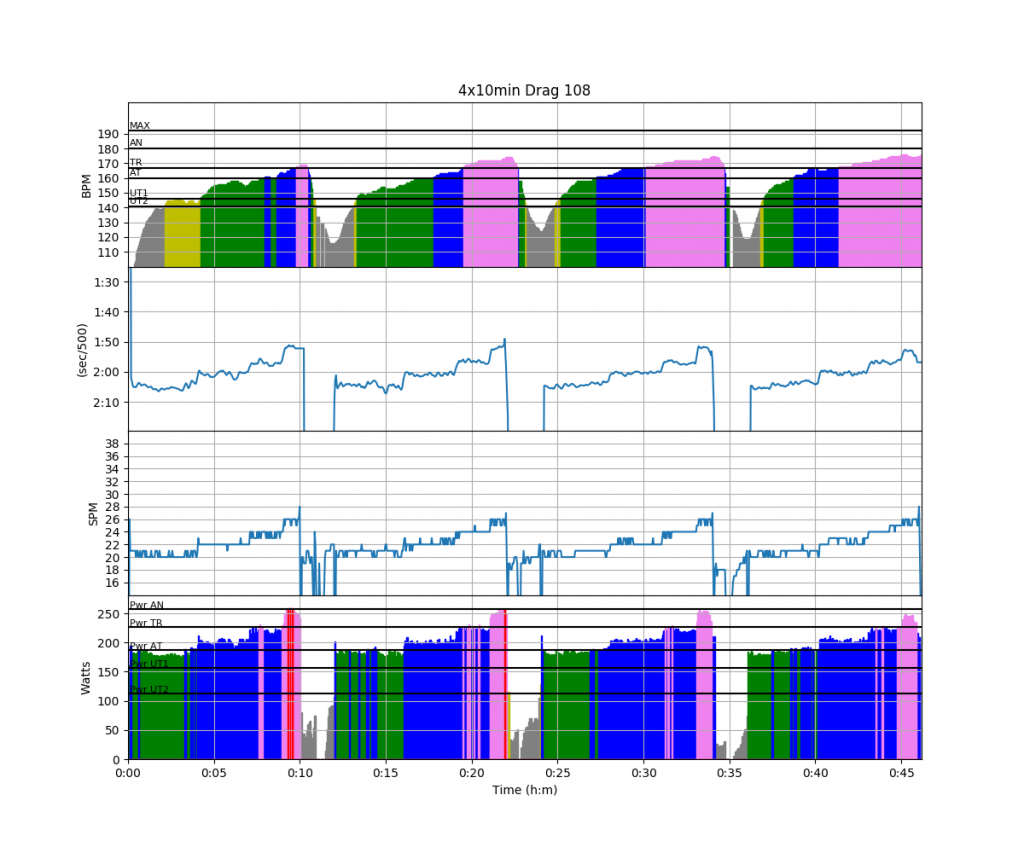

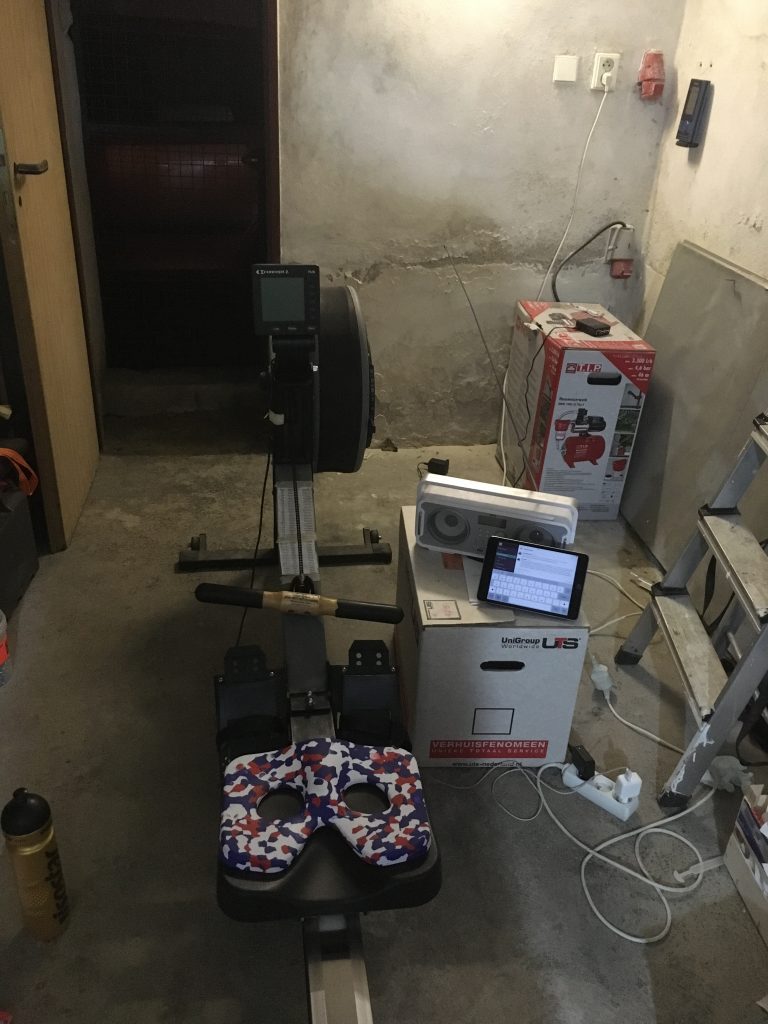
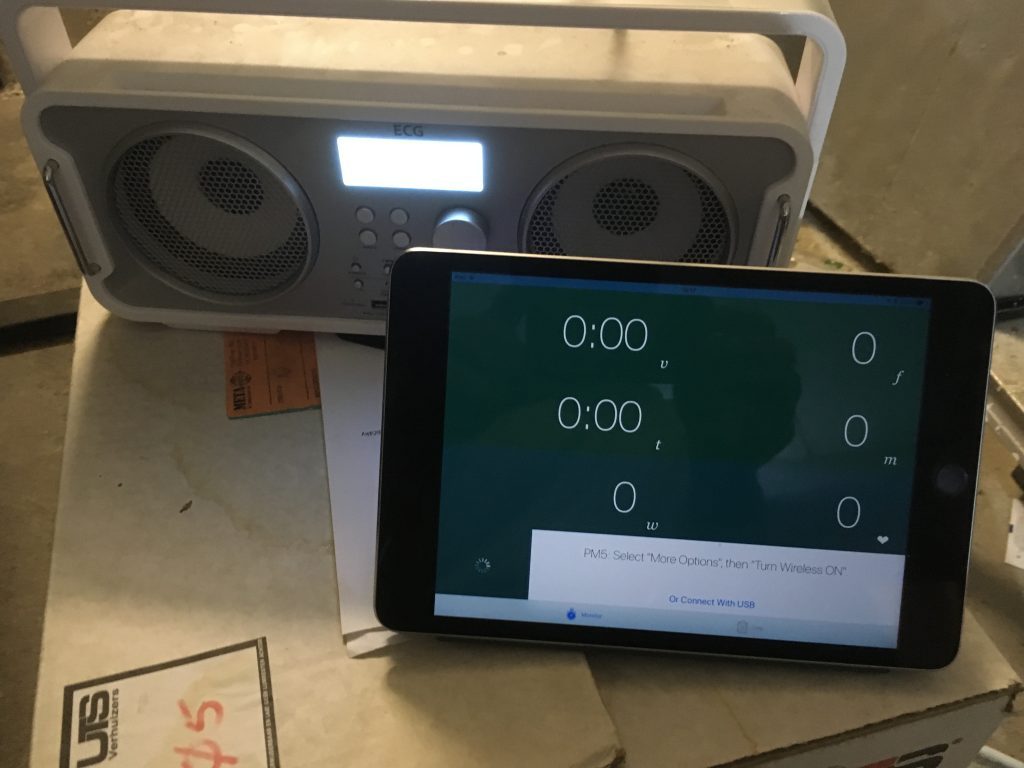
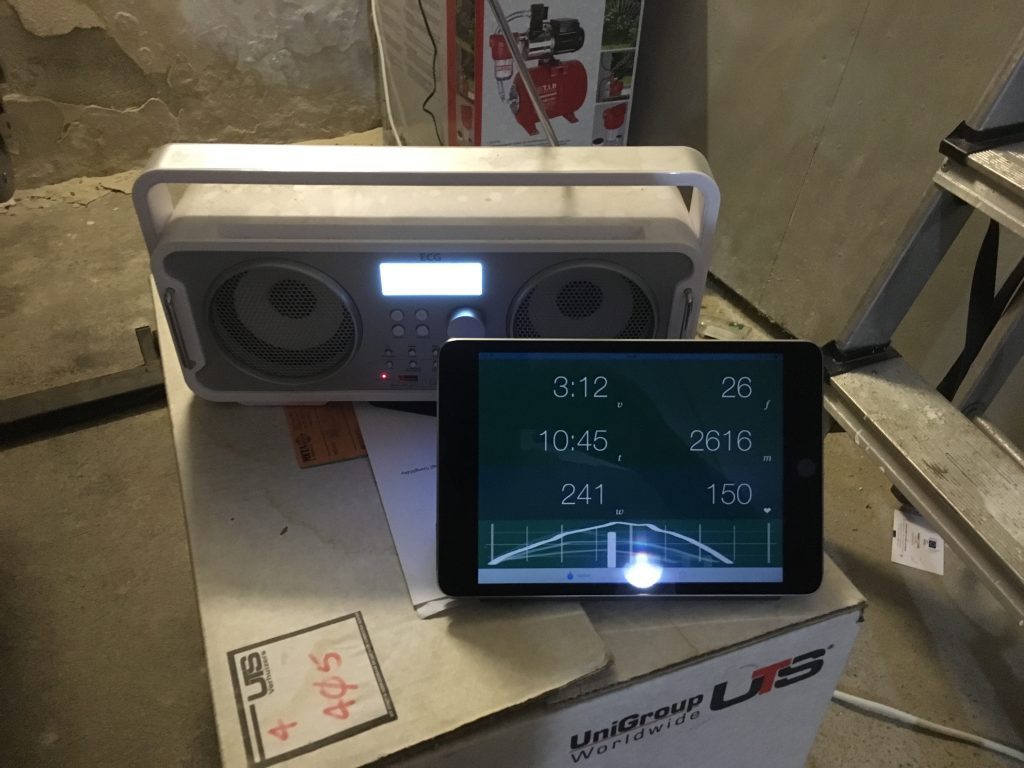
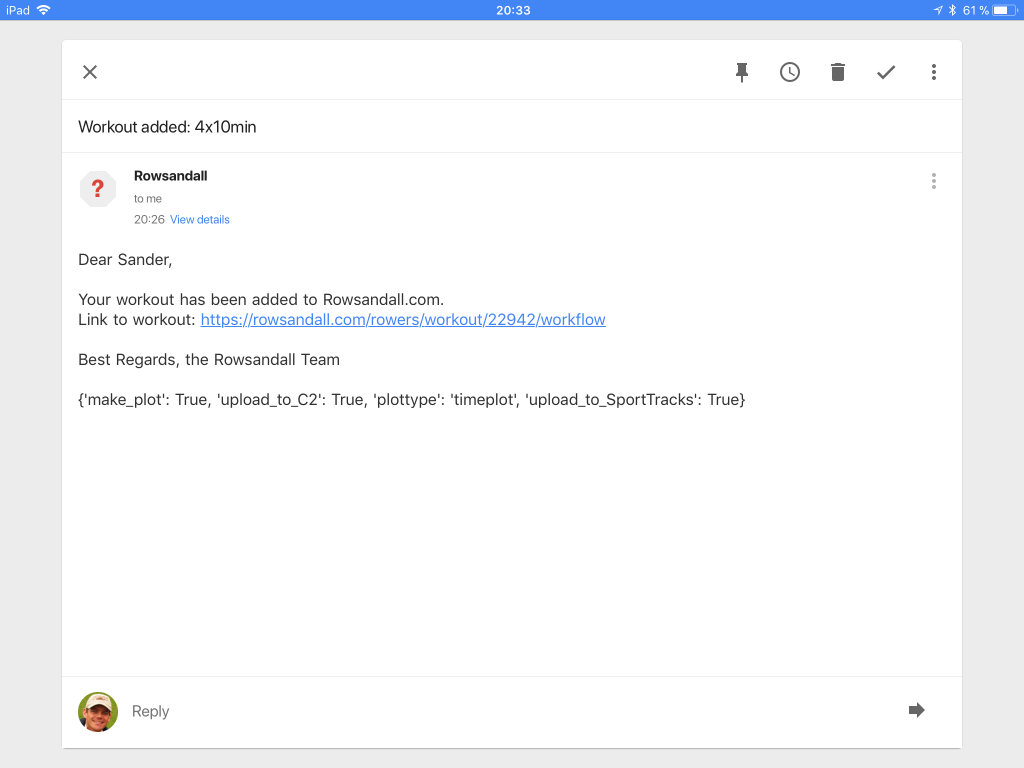

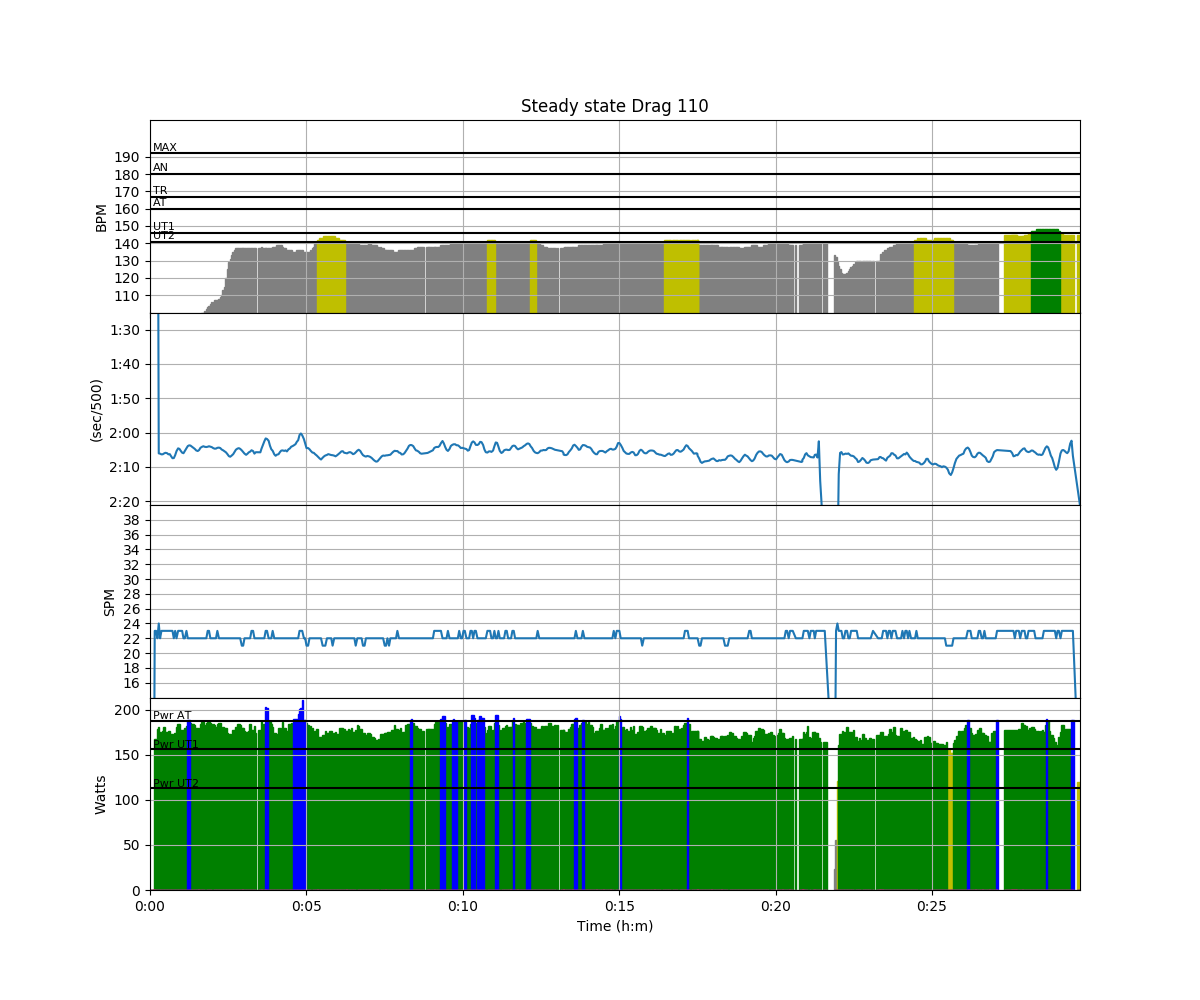
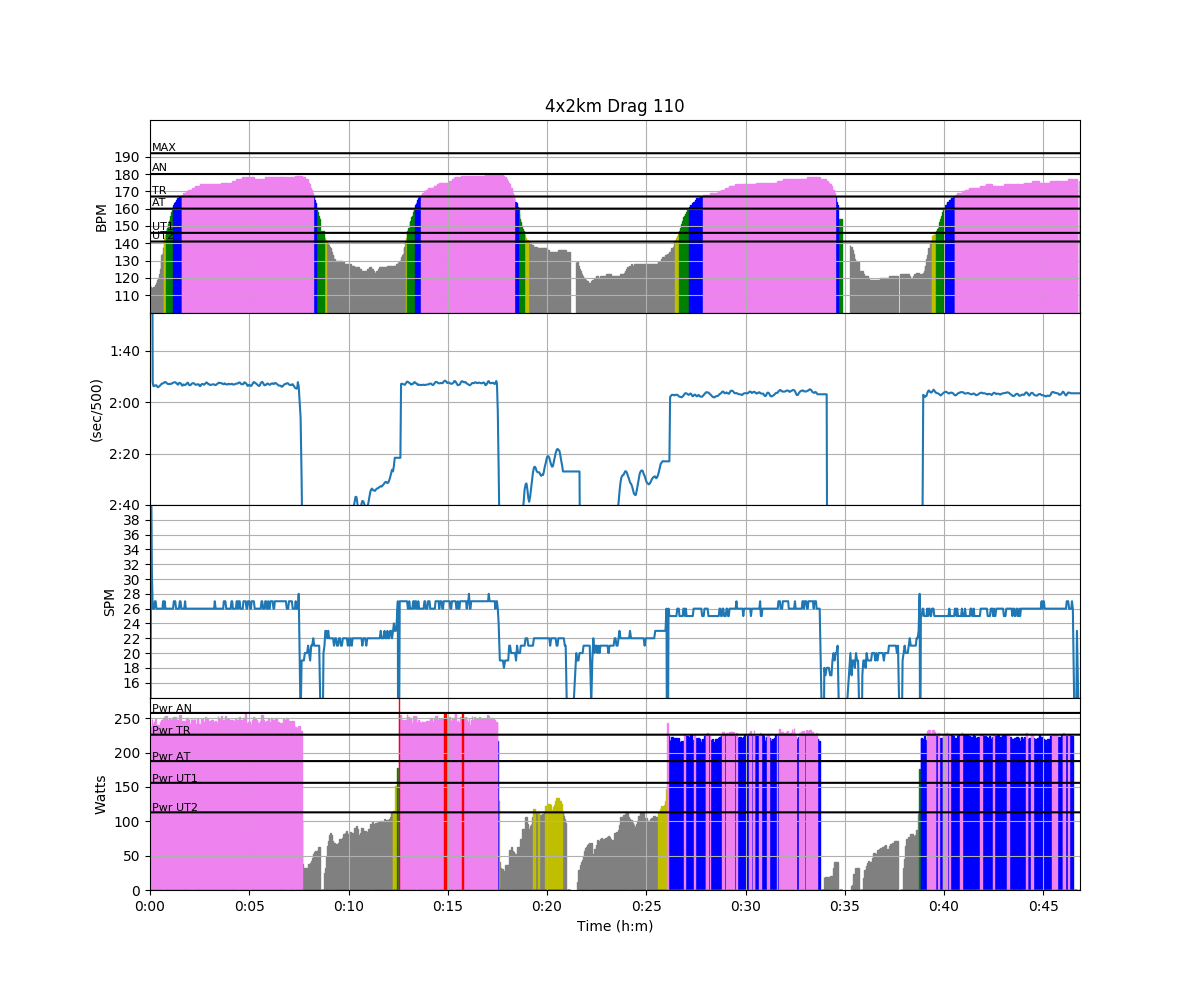
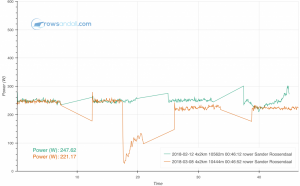
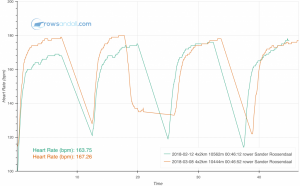
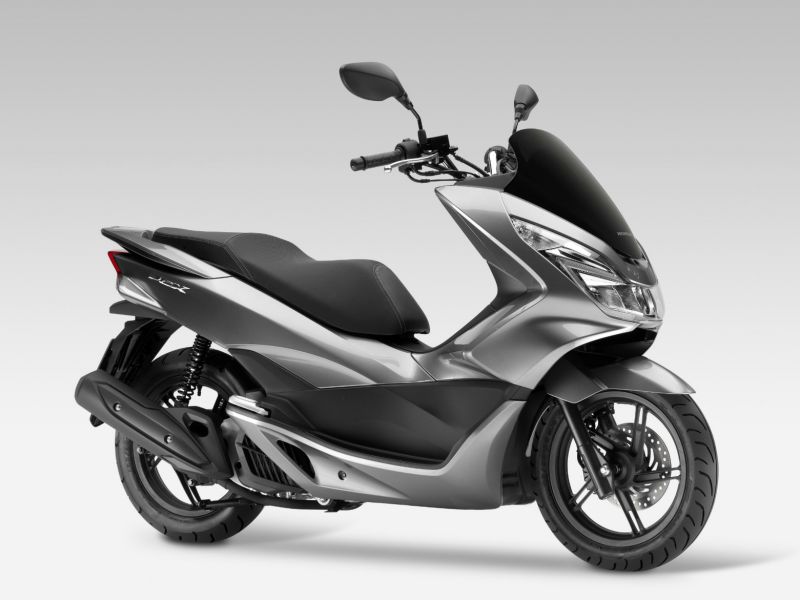
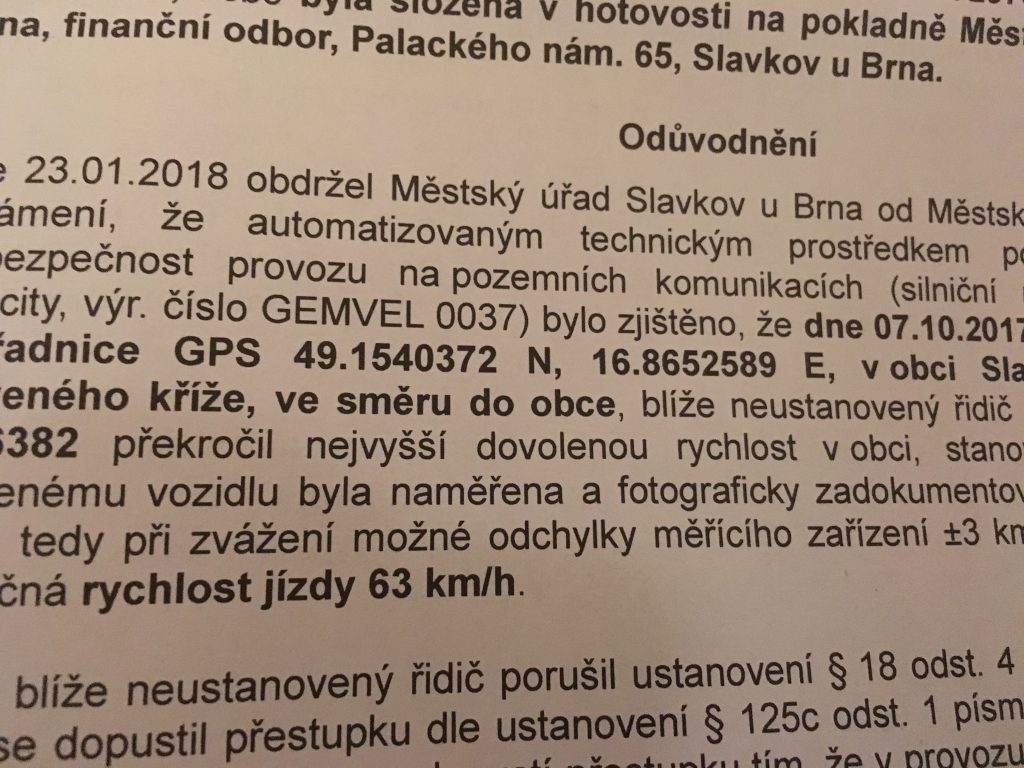
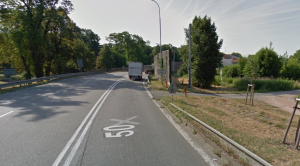

Apr 3 2018
Second OTW row of the season – rating up!
Sunday
No training. Too jetlagged and also having a cold. We did make a nice excursion to a nearby Chateau.
This slideshow requires JavaScript.
Monday
Too strong wind for rowing. I did a one hour swim in the indoor 50m pool.
Tuesday
I created my new training plan for the coming period today, and I was able to weave in quite a lot of the sessions suggested by our club’s head coach. This is not always the case, but this time it worked out.
We’re going out in the eight tomorrow, and I am going to strongly suggest that that will be a steady state session. Some in this Masters rowers group have a tendency to want to do speed work on every outing, but I think that a nice technique row is more appropriate for our first row of the season. That was the reason for me to do the 4x5min/4min at 28/30spm today, so I could claim having it already done, and needing a steady state session.
It was pretty windy and choppy when I launched, so I sought shelter in the gorge. There is a stretch that is a little longer than 1km and pretty straight, so there is where I would be doing my 5 minute intervals.
I still haven’t found my OTW rowing routine. Today, I forgot to pack the heart rate belt.
Workout Summary - media/20180403-1715420o.csv
--|Total|-Total-|--Avg--|-Avg-|Avg-|-Avg-|-Max-|-Avg
--|Dist-|-Time--|-Pace--|-Pwr-|SPM-|-HR--|-HR--|-DPS
--|07503|39:59.0|02:39.9|181.0|22.9|0.0|000.0|08.2
W-|04527|19:52.0|02:11.8|256.0|26.6|000.0|000.0|08.6
R-|02979|20:00.0|03:21.4|106.9|19.2|000.0|000.0|07.8
Workout Details
#-|SDist|-Split-|-SPace-|-Pwr-|SPM-|AvgHR|MaxHR|DPS-
00|01186|05:00.0|02:06.5|272.5|26.2|000.0|0.0|09.1
01|01106|05:00.0|02:15.6|251.5|26.8|000.0|0.0|08.3
02|01146|04:52.8|02:07.8|267.0|26.9|000.0|0.0|08.7
03|01089|05:00.0|02:17.7|233.1|26.5|000.0|0.0|08.2
I am pretty happy with the achieved boat speed. There was a big difference between tail wind (first and third intervals) and head wind (second and fourth intervals) and in the fourth interval I was both tired and steering, as I ended up doing the 28spm bit in the first part of the windy stretch.
In the Flex charts, you can see how I got tired, and especially the Wash number deterioriated (or was it the steering).
I also had a problem with the Empower Oarlock disconnecting and reconnecting several times during the row.I just upgraded the firmware Perhaps it will help.
This slideshow requires JavaScript.
Today was also the first row with the Quiske pod. I used the sensor pod under the seat. I was curious to see if there would be any differences between the head wind and tail wind intervals and between the first ones when I was fresh and the last ones. Let’s first look at boat acceleration for the 26spm and 28spm bits.
That looks pretty consistent. No big differences between the intervals. A bit more spread in the data in the recovery part of the 28spm acceleration curves, compared to 26spm. These bits, two minutes which I counted as 8×7 strokes to survive them, were pretty hard. I conclude that I was able to row 26spm consistently, but have to work on the recovery at higher stroke rates. The acceleration from the minimum speed (left part of the chart) looks OK to me, but I am curious to see what the Quiske crew thinks of it. In 26spm, you see a slight acceleration (or reduced deceleration) in the very final part of the recovery. I was paying attention to accelerating slightly up the slide in that final part, and taking light catches.
Now, let’s look at the Seat Speed:
Funny, I can not see that acceleration on the recovery which I could very distinctly feel as a slight leg pull. I guess one would have to compare with a baseline of people who don’t do this.
Another fun thing is that the Quiske file can be exported to a CSV which is compatible with Rowsandall.com. I imported that file and was able to do a couple of nice charts.
I am expecting that seat speed is more or less linear in boat speed and that the seat recovery speed is more independent. This chart is seat speed (drive & recovery) vs boat speed. Here, I am really just exploring the data, to see if I can make sense of it and possibly derive a useful technique metric.
It is difficult to make sense of these charts now, but perhaps after a couple of rows I will start to understand.
I have also created a data set with all the data from the two rows. If I find time tomorrow, I will do some correlation analysis. Big fun!
By sanderroosendaal • Uncategorized • 0 • Tags: 1x, intervals, OTW, rowing, single, training